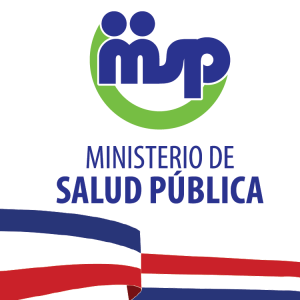
Public Health Minister Rafael Sánchez Cárdenas confirmed on Tuesday, 24 March 2020, that there is now community spread of the novel coronavirus disease in the Dominican Republic. He said this is the time to insist on hygiene measures, self-isolation and social distancing, keeping at least two meters from another person. He announced there are 67 new cases. The tally is now at 312 persons who have tested positive (up from 245 on Monday, 23 March) and six deaths, including that of famous Dominican designer Jenny Polanco. He said that prevention measures are being stepped up.
There are 12 provinces that have not yet reported cases of Covid-19. Most of the disease is concentrated in Greater Santo Domingo (National District and Santo Domingo province), Santiago and San Francisco de Macoris and San Pedro de Macoris.
The Minister said that the community transmission phase means the population has to step up social isolation, hygiene measures and self-protection. “It’s time for extreme hygiene and protection measures, but also for love and solidarity to prevail,” he added. He called for efforts to keep the 12 provinces where there have not been cases free of the disease. Border provinces with Haiti are still coronavirus-free. The official border crossing point is closed, but there have been reports of Haitians traveling home after losing their work in the Dominican Republic due to the collapse of the tourism industry and the construction industry.
Testing has been stepped up recently. Nevertheless, tests continue to be performed only after a person reports symptoms, or by private labs that charge RD$4,300 for the test and require a person to get on a waiting list. The Ministry says it has 5,000 test kits and is expecting more for tests carried out at no cost at the Dr. Defilló National Lab. The government says arrangements are being made to make available more free tests.
In Duarte province, the Minister says that the disease was mostly spread by a woman who did not keep self-isolation in Duarte province after testing positive and due to the imprudence of the provincial medical services head who attended to the woman without the due precautions. The disease also spread due to a large wedding that took place in Punta Cana on 14 March, due to the Dominicans that caught the disease on board the Costa Favolosa cruise, and to a fund-raising party organized by the Catholic Church in San Pedro de Macoris.
Sánchez Cárdenas said there are 68 persons in hospitals, 236 in self-isolation and two have recovered. There are six who have died, with ages 41 to 84 years.
The Dominican government declared a State of Emergency on Thursday, 19 March 2020 through 13 April. Land borders, air and sea ports are closed to passenger traffic. There is a curfew from 8 pm to 6 am since Friday, 20 March.
The first person to test positive was an Italian tourist on 3 March. Two weeks later, by 16 March, there were 21 cases. The numbers would continue upwards. On 18 March: 34 cases; 20 March 72 cases; 21 March 112 cases; 22 March 202 cases; 23 March 245 cases, 24 March 312 cases.
As of 24 March, the National District and Santo Domingo province accounted for 57% of all cases. The provinces were as of 24 March there were not yet confirmed cases of the virus are: Bahoruco, Dajabón, Elías Piña, El Seibo, Independencia, Montecristi, Pedernales, Peravia, Santiago Rodríguez, Monte Plata, Hato Mayor and San José de Ocoa. The provincial count of the disease in the National District and the other provinces was as follows as of 24 March:
National District 137
Santiago 44
Santo Domingo 40
Duarte (San Francisco de Macorís) 29
La Altagracia (Higuey, Veron and Punta Cana) 11
San Pedro de Macoris 10
La Vega 8
La Romana 5
Puerto Plata 5
Samana 5
Hermanas Mirabal (Salcedo) 3
Monsenor Nouel (Bonao) 3
Espaillat (Moca) 2
San Juan de la Maguana 2
Azua 1
María Trinidad Sánchez 2
Barahona 1
San Cristóbal 1
Sanchez Ramirez 1
Valverde 1
Read more in Spanish:
Presidencia
Diario Libre
25 March 2020

